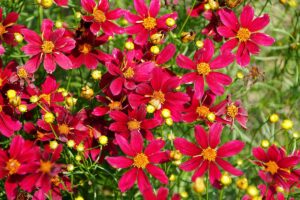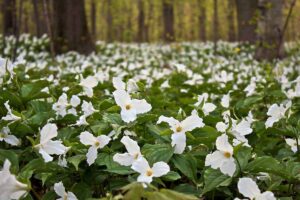Snapdragons (Antirrhinum majus) are colorful, fragrant, popular additions to the garden and vase.
Snapdragon seeds are readily available for purchase from any nursery or retailer that sells seeds.
But if you – or a friend – are growing these flowers in your garden, you can also collect seeds from your own plants and save them for planting the next season if you wish.
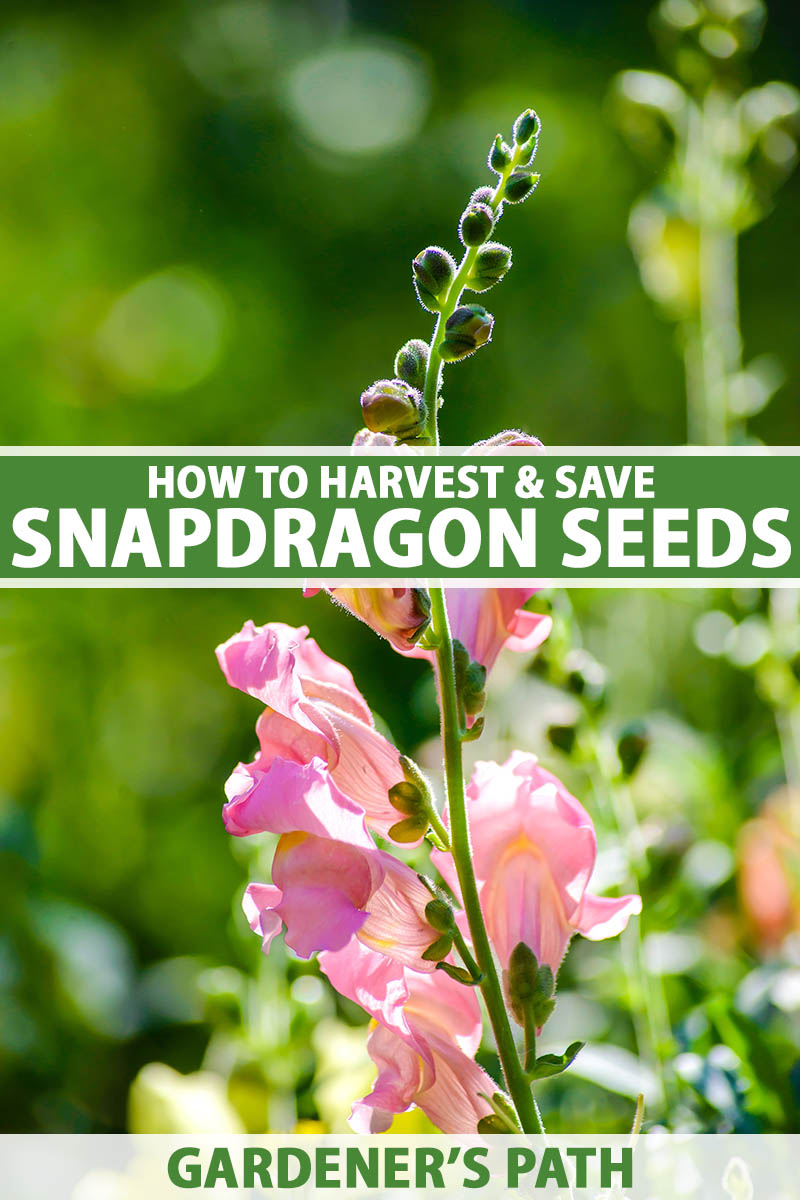
We link to vendors to help you find relevant products. If you buy from one of our links, we may earn a commission.
If that sounds like a good idea but you don’t know where to start, we’ll discuss exactly how to do it in this guide.
This is what we’ll cover:
What You’ll Learn
Pollination
The first step in seed production is pollination. Though most wild snapdragons are not self-compatible, meaning a flower can’t pollinate itself, cultivated snapdragons are.
Since they self-pollinate, the resulting seeds will produce plants that are very similar to the original, if not identical.
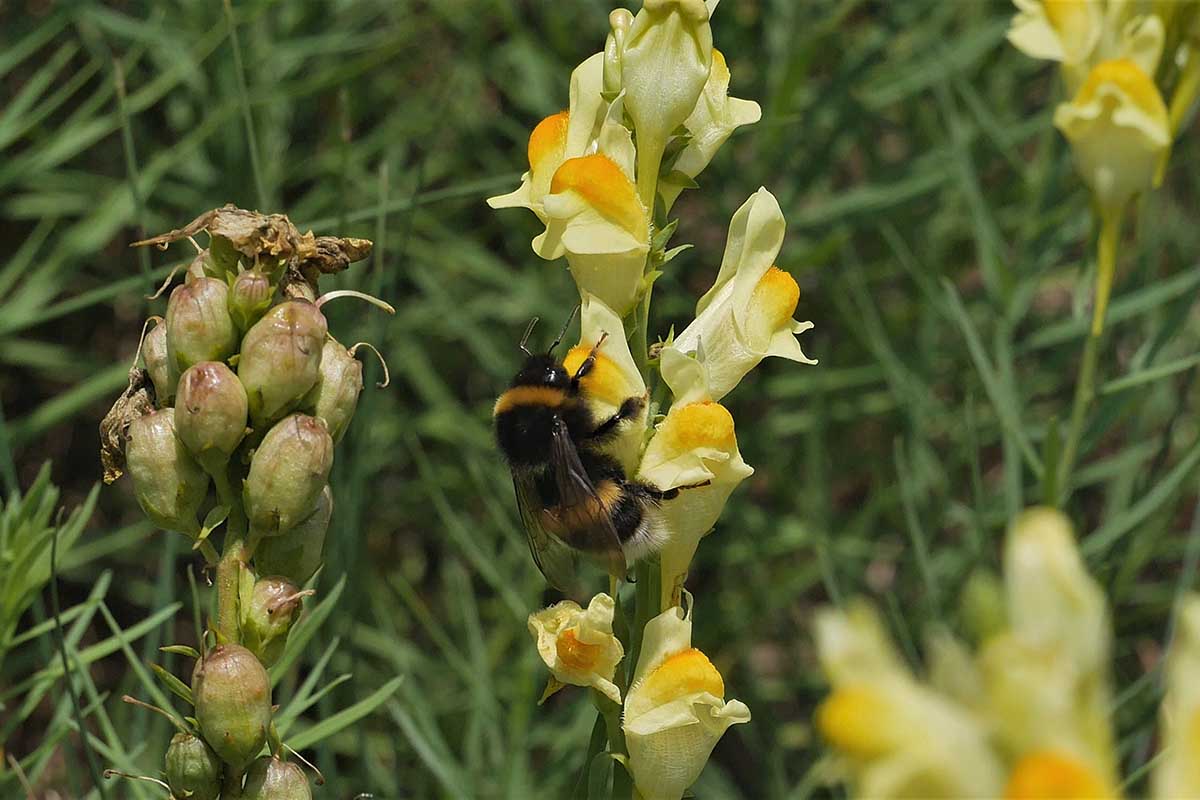
Luckily, you really don’t have to do any work for your garden snapdragons to produce seeds. They will pollinate themselves, and pollinators like bumblebees will help.
However, if you want to get really involved and make some hybrids if you’re growing several different cultivars, you can do that by hand-pollinating your plants.
Here’s how:
Harvest fresh, bright, sticky yellow pollen by squeezing the donating flower open and tapping or scraping the pollen from the anthers onto a piece of wax paper.
To make sure the receiving flower isn’t pollinated by itself before or after you pollinate it, choose a bud that’s still closed. Carefully open it by folding back the petals, and remove the anthers by gently pulling them out with tweezers.

While you’re in there, use a paintbrush or toothpick to put the collected pollen on the stigma of the receiving flower.
Cover the pollinated flower with a mesh bag to prevent other pollen from getting in, via bees that visit your garden.
Keep an eye on your mesh-covered blooms. If you did a good job pollinating, eventually the petals will fall off and reveal a pod. Congratulations, you’ve passed a very important test in becoming a bee!
Read our guide to pollinating and collecting hybrid snapdragon seeds for more tips.
How to Harvest
Four to five weeks after pollination occurs, the seeds are ready to be harvested!
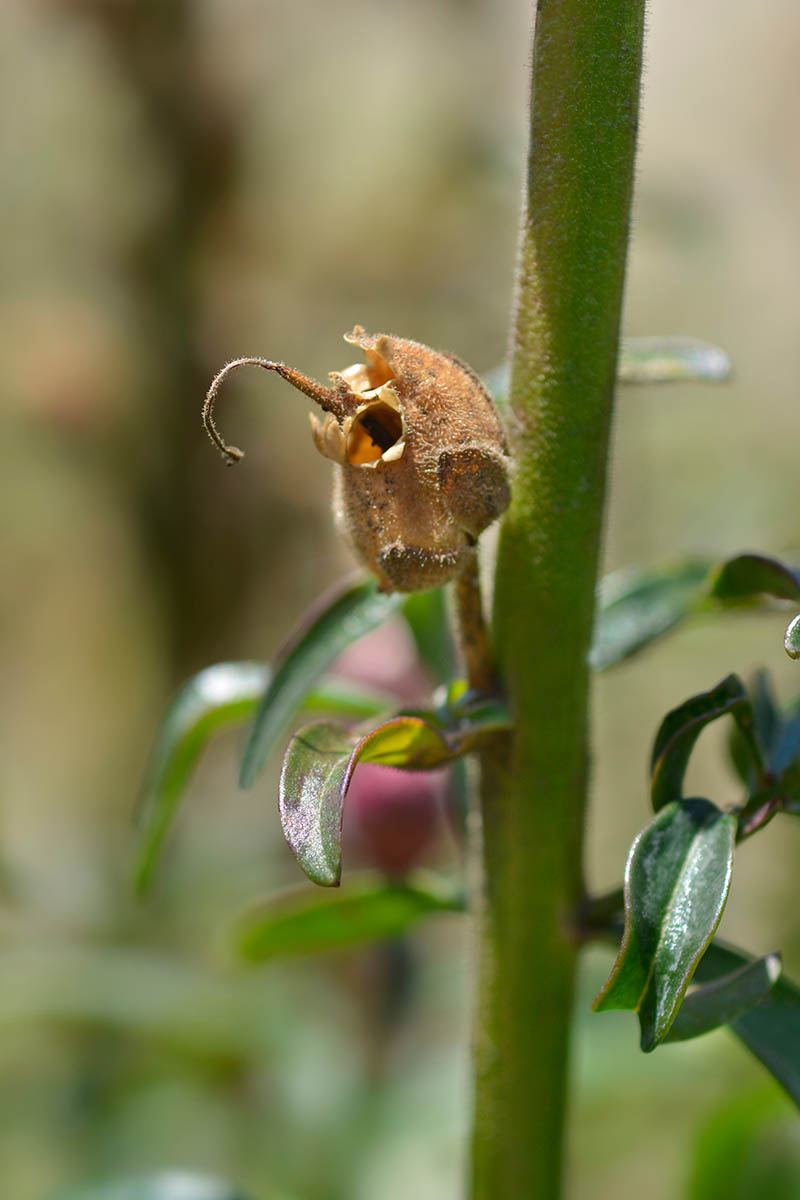
If you didn’t do the pollination yourself, give any brown pods that you see a gentle shake. If you hear rattling inside, they’re ready to be harvested.
Make sure you catch them before the pods burst open and the tiny kernels are released.
The dark colored seeds are tiny and very light, so if it is windy out, twist pods off the plant and take them indoors to break them open so they don’t blow away while you are harvesting them.
Break open the pods and simply shake them over a bag or container to catch the seeds as they fly out.
How to Store
Before packing the seeds away, spread them out on a piece of paper and place in a dry, cool area out of direct sunlight to let them dry out for a day or two.
The best way to keep them viable is to store them in a paper bag or packet. Storing them in plastic can lead to mold.
Keep the seeds in a cool, dark, dry place.
Although snapdragons will germinate better if you chill them beforehand, they only need seven to ten days of cold stratification before sowing, so there is no need to store them in the fridge the entire time.
If you store them properly, they will remain viable for up to three years.
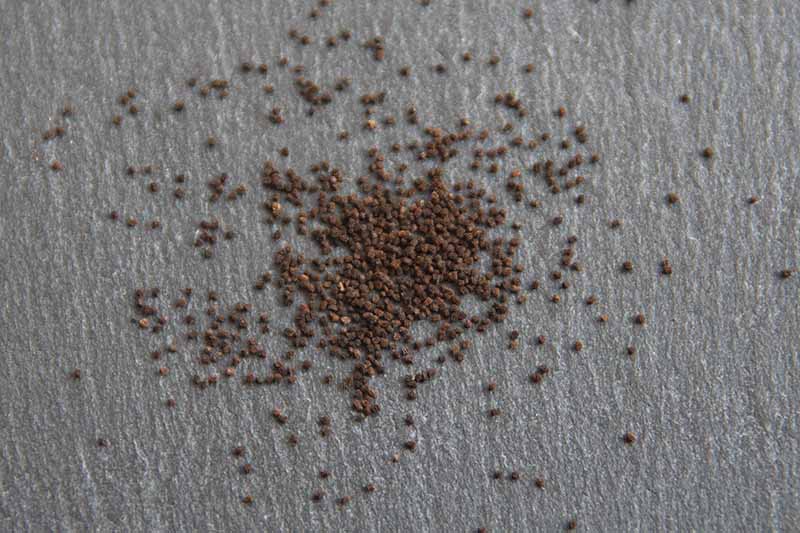
To evaluate whether they are still viable after a long storage period, you can test germination with this easy method:
Moisten a piece of paper towel or napkin, sprinkle on a known number of seeds (10 is a good number), fold the towel over and put the folded paper towel in a plastic bag.
Place the bag in a warm – 70 to 75°F – location that is bright, but not direct sunlight. They need light to germinate but direct sunlight will likely become too hot.
After seven days, remove the folded paper towel from the bag and open it carefully to see if germination has occurred.
Give them up to fourteen days before doing your final look and count.
This will give you an idea if your seeds are still viable, and if you need to sow at a heavier rate when you do plant them.
Give Me All the Antirrhinum
Harvesting and storing snapdragon seeds is simple, and a great idea if you want to grow more snapdragons next year.
Be sure to check out our article on how to start snapdragons from seed to help you grow beautiful flowers from your own collection!
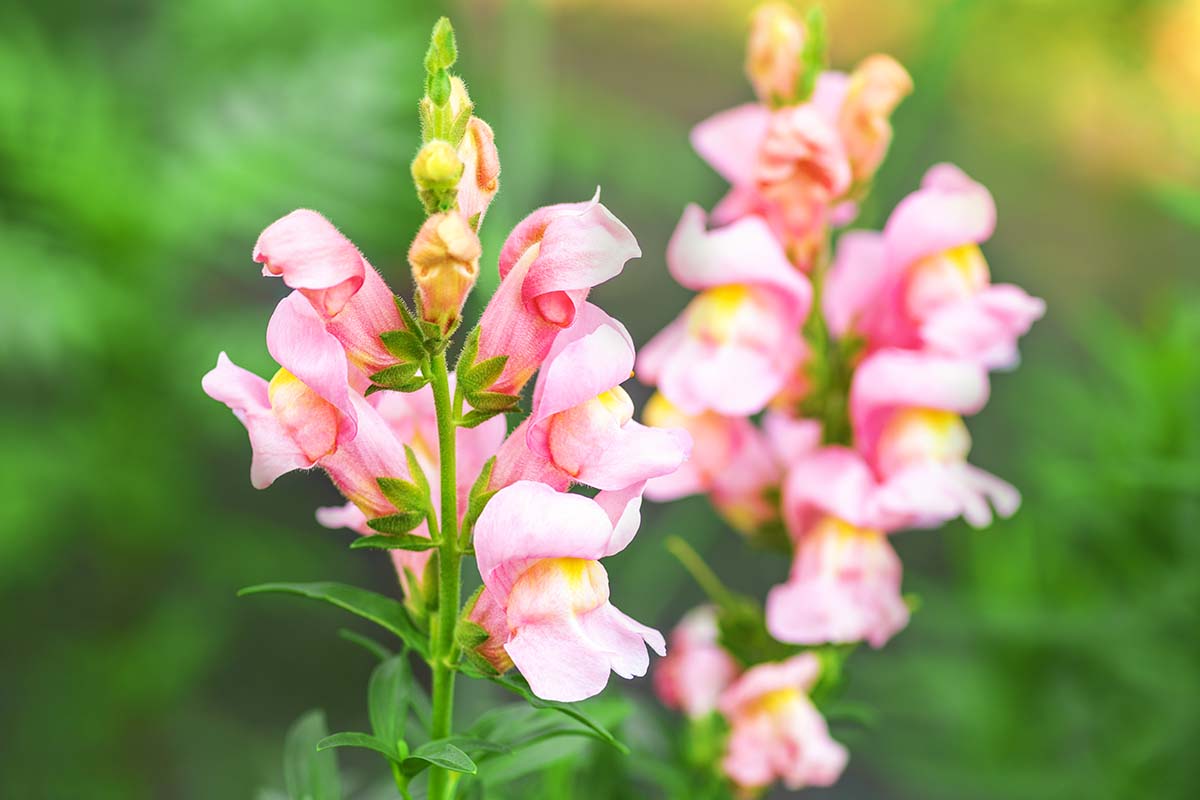
Have you ever grown flowers from your own harvested seed? Let me know how it went in the comments below!
While you’re still thinking about snapdragons, more growing information on these beauties can be found in these guides:
